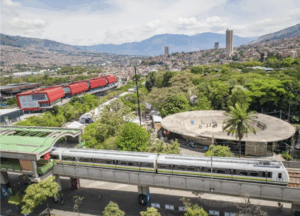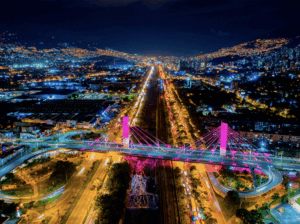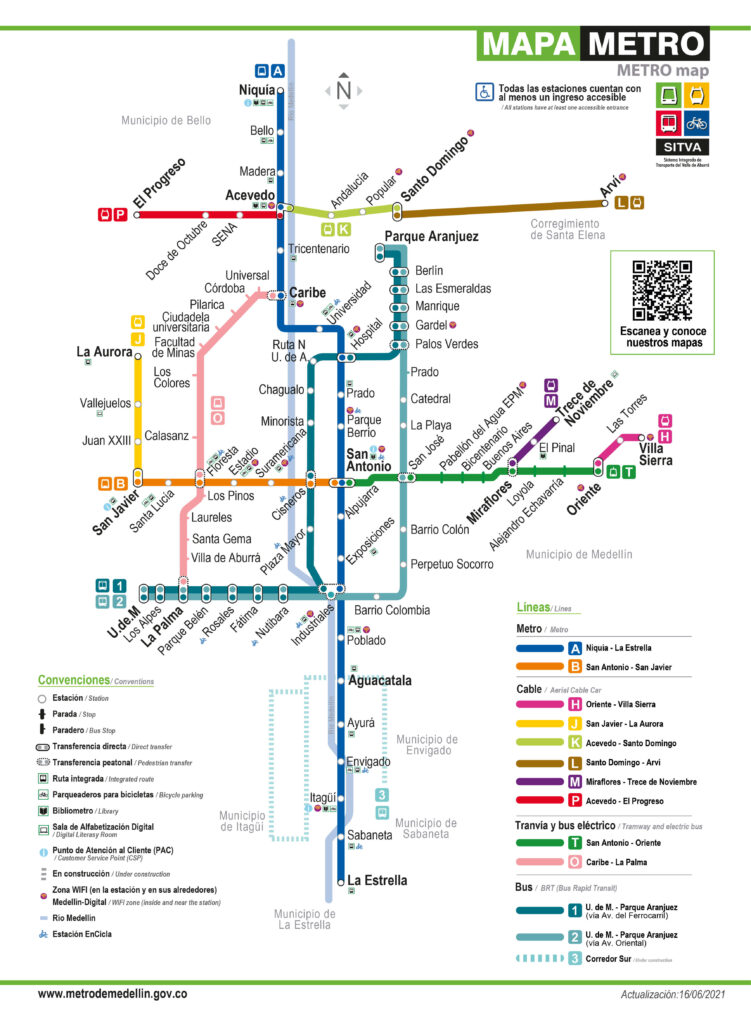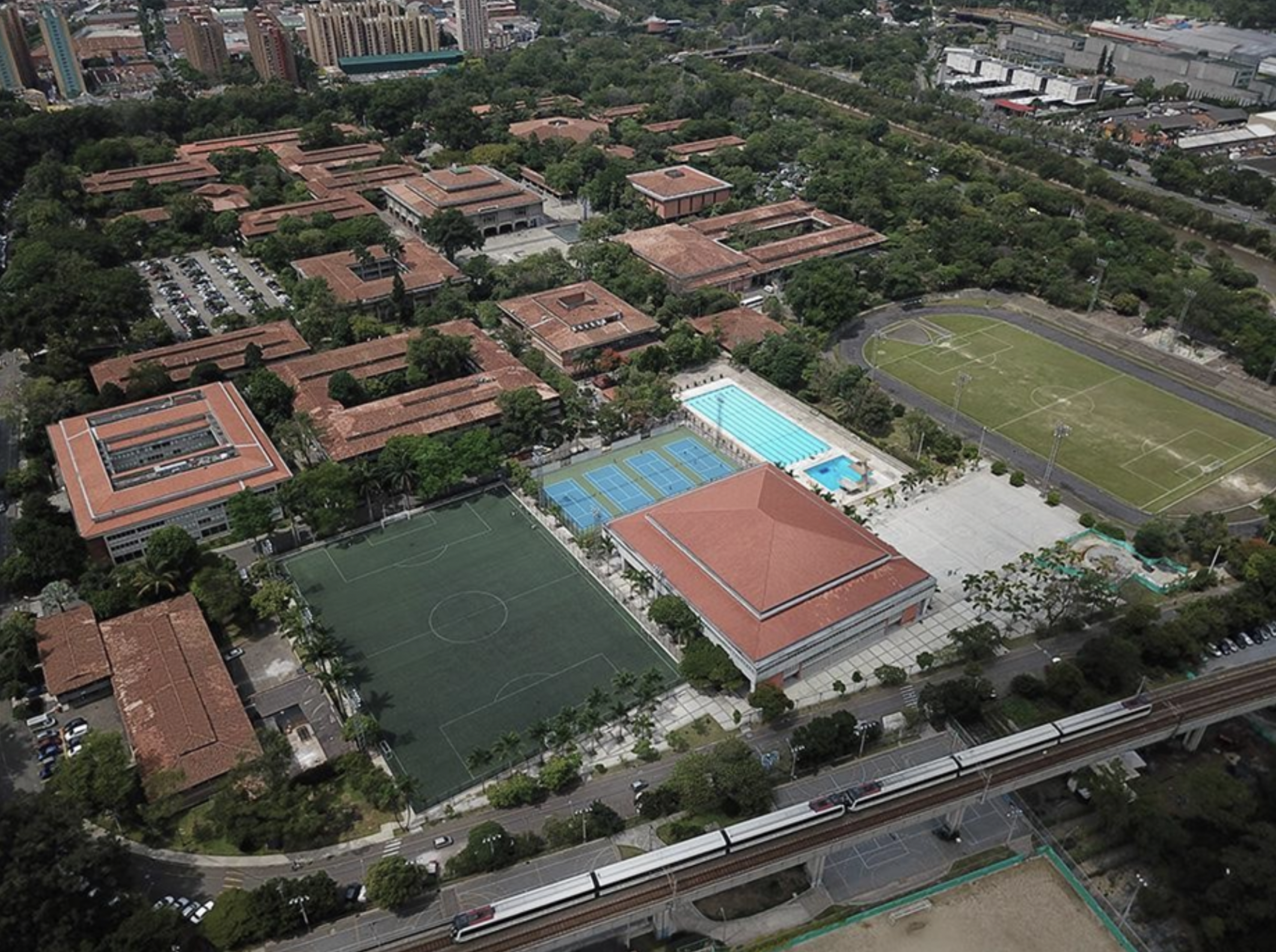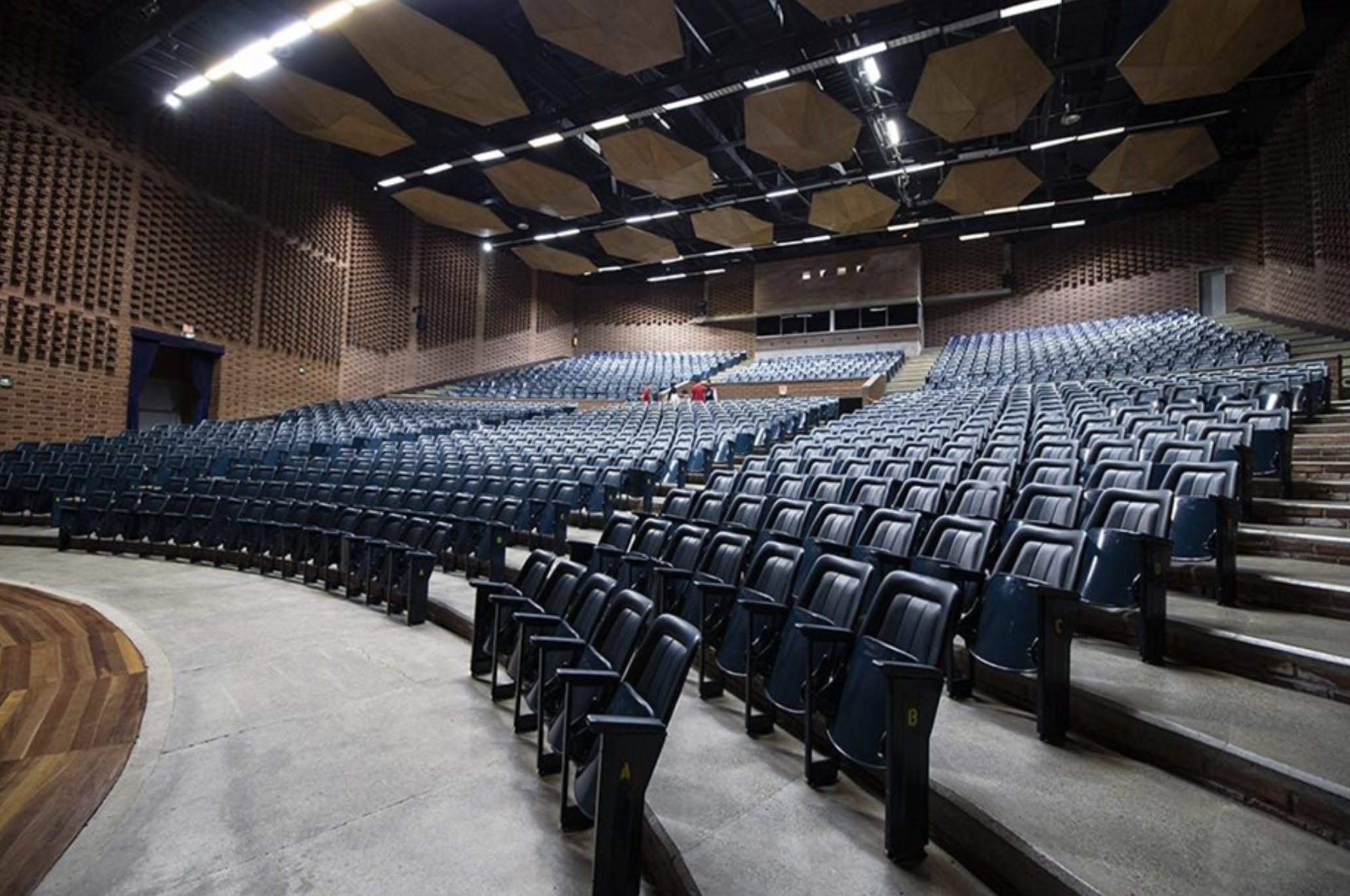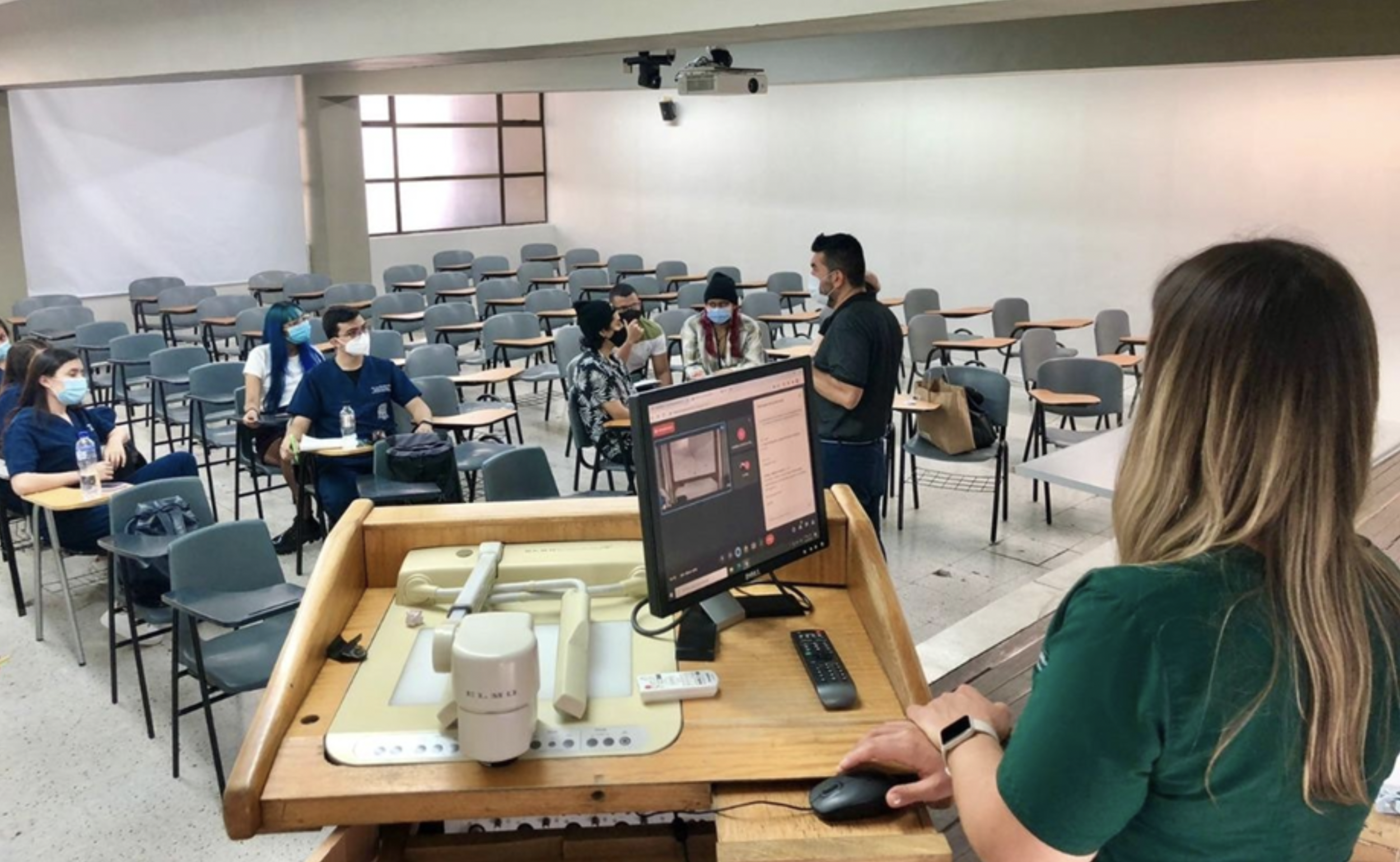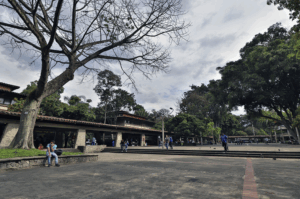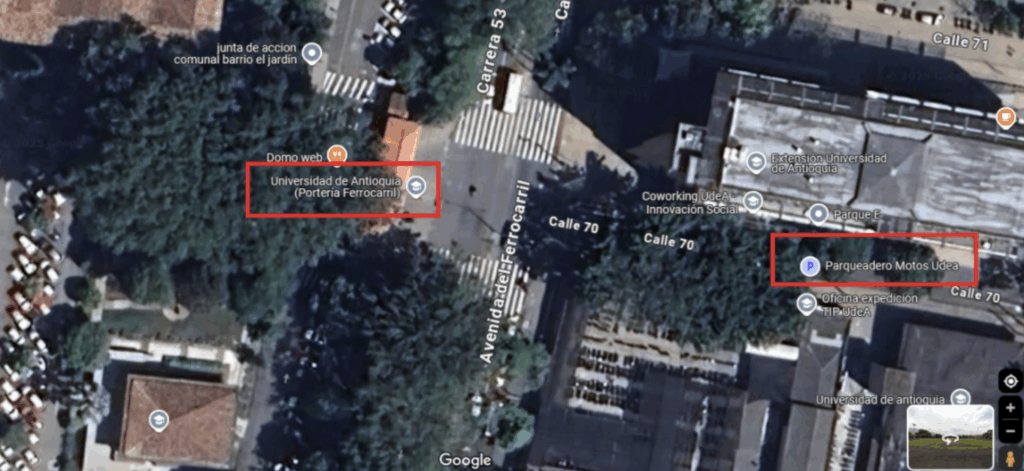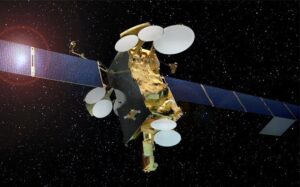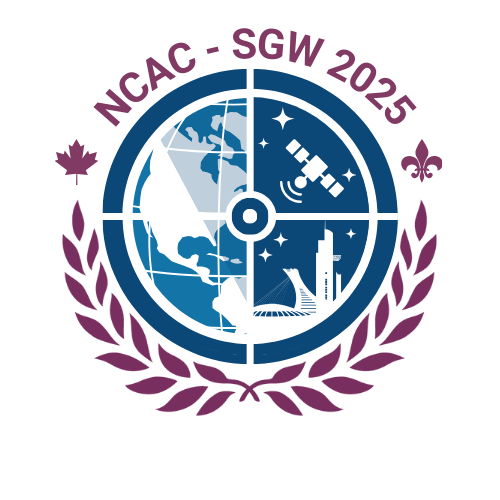Coming to SG[Colombia] 2025!
Medellín
Medellín, Special District of Science, Technology, and Innovation. This is the official name of the well-known “Ciudad de la Eterna Primavera.” And as its name suggests, it is a city that, through these three areas, is constantly working on social inclusion, the environment, and education, with a view to improving the quality of life of its inhabitants. This can be seen in the ongoing energy transition of public transportation systems and the various events held in the metropolis around the Fine Arts, and on topics related to sports, gender equality, mental health, the circular economy, among others. We invite you to visit the Instagram profile Visitar Medellín to plan your visit like a local.
Estación Universidad del Sistema Metro de Medellín. Photo taken from the webpage El Colombiano, https://www.elcolombiano.com/cultura/habilitan-la-inscripciones-para-la-fiesta-del-libro-2021-FA15734320
Additionally, whether you prefer daytime or nighttime activities, Medellín is a vibrant, active city with hundreds of experiences to offer. If you want to explore the city’s most historic and cultural attractions, we recommend the city center, which features the Museo de Antioquia and the Museo Casa de la Memoria (House of Memory Museum), theater venues like El Pequeño Teatro and Casa Clown, iconic restaurants like Palazzeto and Versalles, and a wide variety of cafes and bars like Persona, El Acontista, and Salón Málaga. We also recommend the Laureles and 70th Street neighborhoods, where you’ll find more contemporary venues that capture the essence of local culture and commerce. Finally, if you’re more interested in nightlife and trying unusual dishes, El Poblado is the place for you. There, you’ll find cuisine from all over the world and plenty of options for enjoying yourself to the sounds of local and international rhythms.
Puente Gilberto Echeverri Mejia sobre el corredor del río. Photo taken from the webpage Procolombia,. ttps://colombia.travel/es/blog/medellin-destino-a-la-vanguardia-para-negocios-y-eventos
All of these venues are easily accessible via Medellín’s public transportation system, primarily the integrated Metro system, which covers the entire area via trains, trams, buses, and cable cars. The closest metro station to the event venue is Universidad Station, just a few steps from the main exit of the University of Antioquia. The city also has a good car rental system through digital platforms. However, if you prefer not to travel, near the campus you can find places like the Botanical Garden, Explora Park, Parque de los Deseos, and the Bosque Plaza shopping center. These recreational areas offer restaurants, movie theaters, and local cuisine. For a more detailed description of the Metro system, we recommend visiting the following link: https://www.metrodemedellin.gov.co/usuarios/sistema-integrado/#metro. The map of the Integrated Mass Transportation System for the city of Medellín is presented below.
The map of the Integrated Mass Transportation System of the city of Medellín. Taken from the Metro website. https://www.metrodemedellin.gov.co/en/travel-with-us/maps
To get to the city of Medellín from José María Córdoba International Airport (location: https://maps.app.goo.gl/7D5156QkydWEdes16) and vice versa, it is recommended to take the Combuses bus system, which has a fare of 17,000 COP, specifically the one for the Túnel de Oriente route, which has the Exposiciones metro station as its final stop.
Venue
Universidad de Antioquia
Since the mid-20th century, the University of Antioquia has played a crucial role in democratizing access to scientific and technological knowledge across Antioquia, expanding education beyond Medellín into rural areas. Its pioneering initiatives laid the foundation for regional development in health, engineering, and sciences, while continuous modernization of its campuses and research facilities has supported the growth of applied research and innovation.
The University stands out nationally for hosting the country’s only undergraduate program in Aerospace Engineering. This program prepares professionals to design and manage advanced aerospace systems, responding to growing demands in aeronautics, space technology, and defense. Alongside aerospace, the Schools of Engineering and Exact and Natural Sciences offer robust programs in fields such as civil, electrical, mechanical, systems engineering, physics, mathematics, and biology, all emphasizing applied research and solutions to key challenges in energy, agribusiness, health, and environmental sustainability.
Committed to fostering highly qualified researchers and professionals, the University of Antioquia drives regional and national innovation through interdisciplinary projects and collaboration. Its focus on academic excellence and knowledge generation positions it as a leading institution for scientific and technological advancement in Colombia, making significant contributions to industry, society, and sustainable development.
Most important common areas at the university:
-> Plazoleta Barrientos: There are various food and drink stands. There are also stationery stores.
-> Restaurants: Around Block 20 (across from Block 19), there are several variety stands, as well as a nearby restaurant selling full menus. Also, just outside the University (a maximum of a 5-10 minute walk), there are two shopping centers (Bosques Plaza and Aventura) with a wider variety of restaurants.
Accessibility:
Pedestrian Accessibility: There are four pedestrian entrances. The Metro and Metroplus public transportation stations are across the street.
Vehicle Accessibility: The Railway Entrance, the Barranquilla Entrance, and the River Entrance. Important: Car access only. Motorcycle parking is located in the building across from the Railway Gate, opposite the UdeA Extension building. Parking is free.
Location in Maps: https://maps.app.goo.gl/xjetx3Zs3YD6XdBc6
Main links:
Oficial web: udea.edu.co
Google Maps: https://maps.app.goo.gl/LxNVmzyRRURVxFJ1A
Colombia and the space sector
Based on the CONPES 3983 that assesses the politics of space development, Colombia has not had a long-term vision of the Space Sector, however, it has had some participation in projects and initiatives.
In 1969 Colombia built a terrain station for space communications in Choconta, Cundinamarca for the use of Telecom. As Colombia had the terrain station, the Colombian government required Telecom to develop a project to acquire its own satellite, with the CONPES 1421 during the 70 decade, however the licitation was declared dessert.
Terrain Station in Choconta taken from https://hormiguitas2003.blogspot.com/2019/04/estacion-terrena-de-choconta-patrimonio.html
Meanwhile in 1977 Colombia and other countries in the Andean region embarked on a project called “The Condor Project”, it took around 40 years to develop the project and in 2017 the satellite SES-10 was launched successfully.
Satellite SES-10 taken from https://www.comunidadandina.org/notas-de-prensa/satelite-ses-10-sera-lanzado-la-proxima-semana/
In 2009, Colombia wanted to acquire the (Satellite de Comunicaciones de Colombia) Satcol, with the CONPES 3579 and CONPES 3613, however in 2010 the project was declared dessert.
With the CONPES 3683, guidelines for the formulation of a national program of Earth Observation 2010 showcase the need of the Country for earth observation, however in the end the project was not completed.
In terms of the governance in space for Colombia, the Comisión Colombiana del Espacio (CCE) is in charge; it was an instance created by the government with the decree 2442 of 2006. The CCE has developed several projects, for instance, the recommendations for the creation of a Space Agency in 2011. And a national plan for satellite navigation published in December of 2015.
Also, there have been some private initiatives and public-private partnerships, in 2007, the Libertad 1 was launched into space, it was a picosatellite of 10cm x 10cm with a weight less than 1 kg. In 2018 the FACSAT-1 was launched into space, FACSAT-1 is a nanosatellite with less than 10 kg. In 2023 the FACSAT-2, Chiribiquete a 6U CubeSAT was launched to space. Now there is a projection to launch the FACSAT-3 in the coming years.
In 2022 Colombia joined the Artemis Accords, which aims for the Pacific use of space, interoperability, emergency assistance, registering of space objects, and freedom of scientific data. However, there is not a concise project of how Colombia is going to support the Artemis Mission. Moreover, Colombia has signed Memorandums of Understanding with Brazil, India, and THALES in space-related issues.
Currently, there is a project in the course on the creation of the Agencia Nacional de Seguridad Digital y Asuntos Espaciales that is under discussion in the Sixth Commission of the House of Representatives, the second debate is coming, to create the agency 4 debates are needed. Colombia has an active participation in the research conducted in the Antarctic, which has implications in the study of space, Diana Trujillo was selected as flight Director of NASA in 2024.

